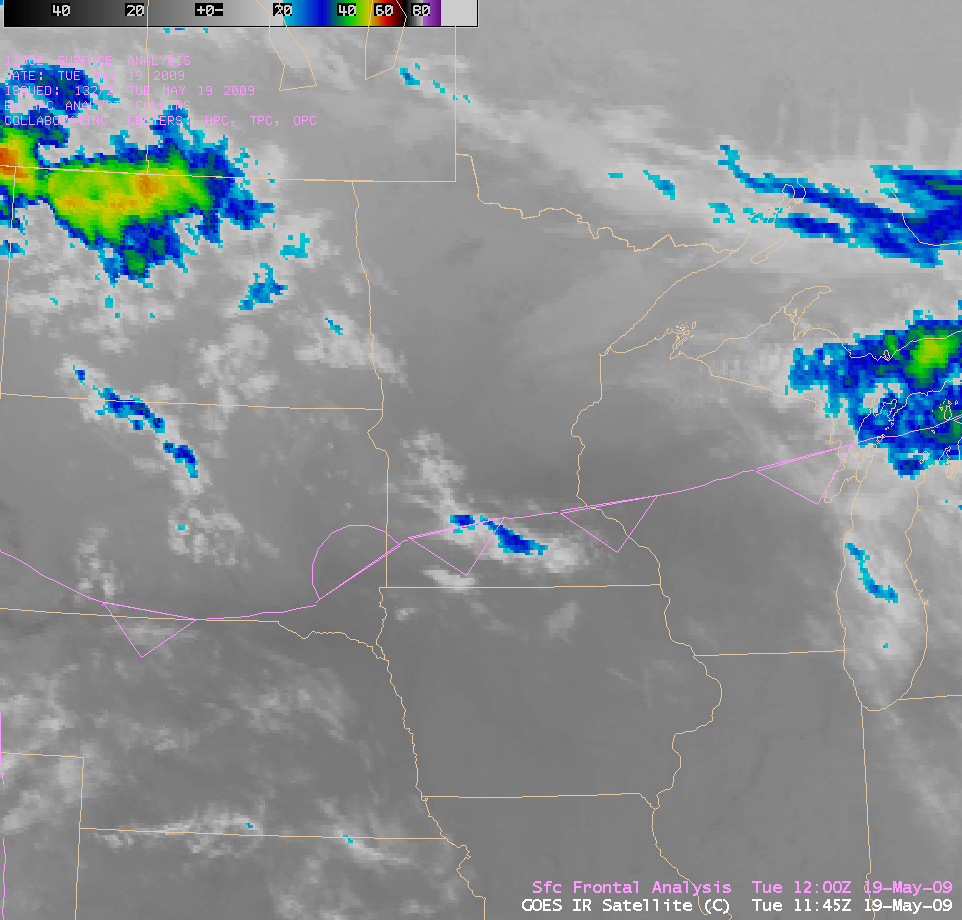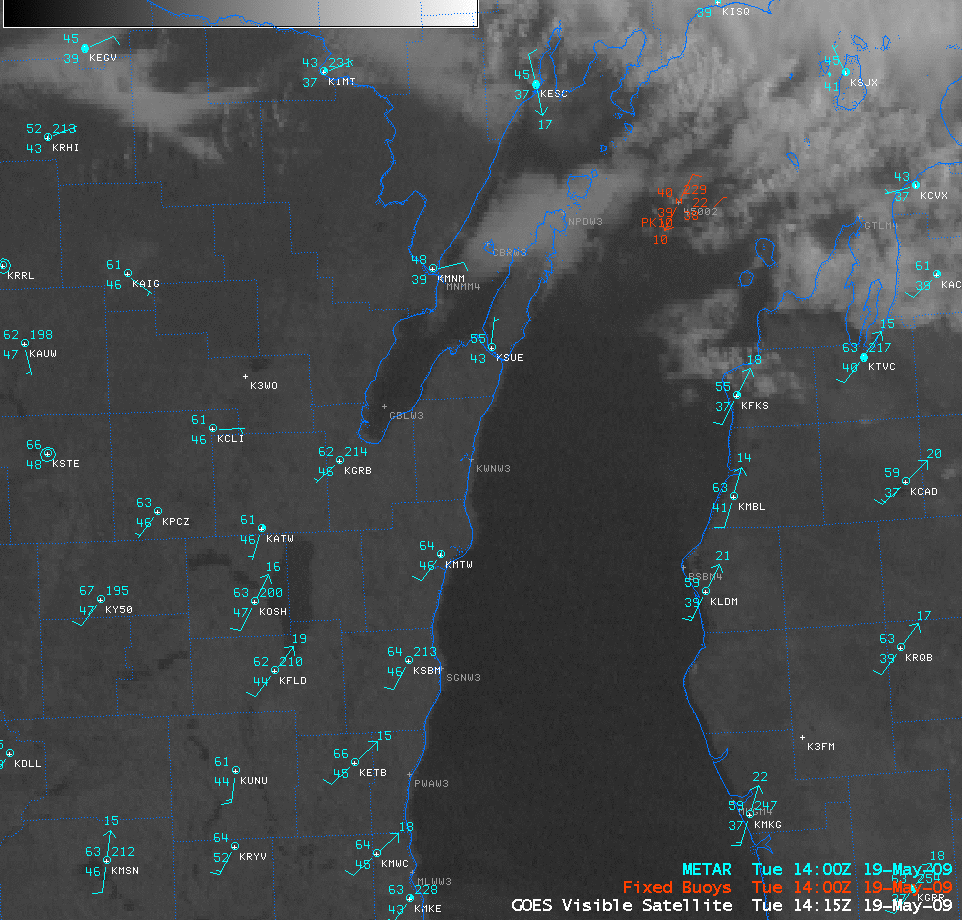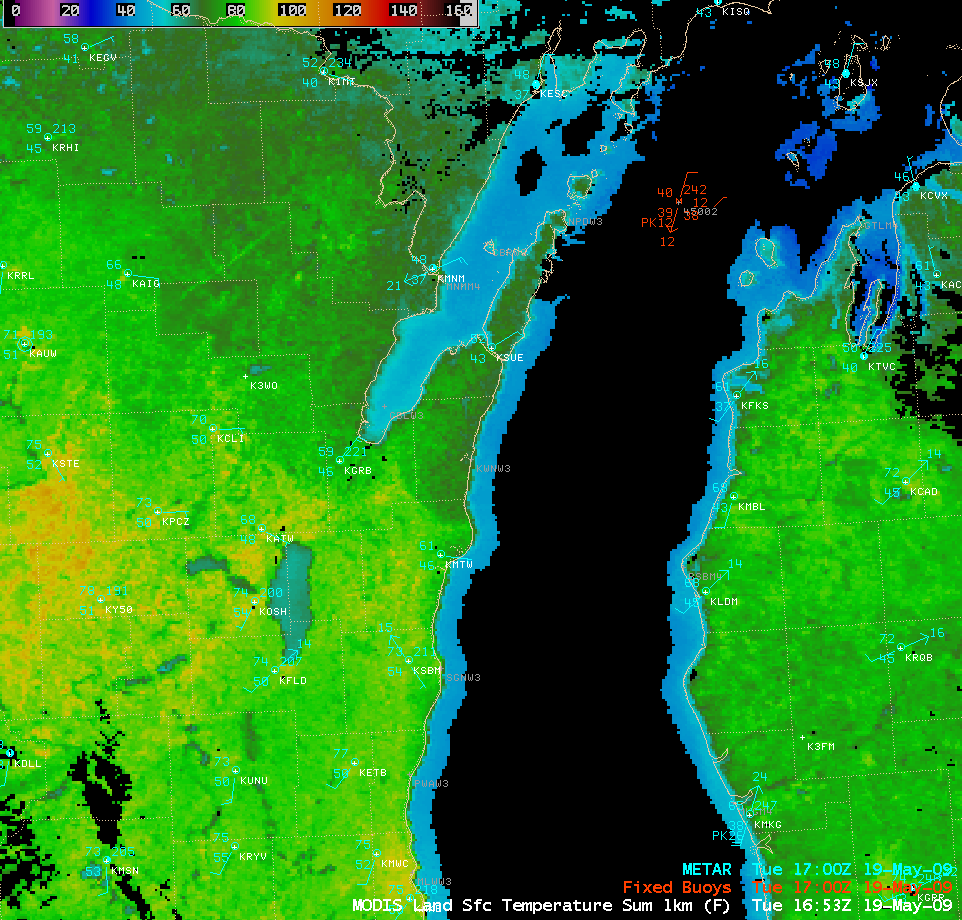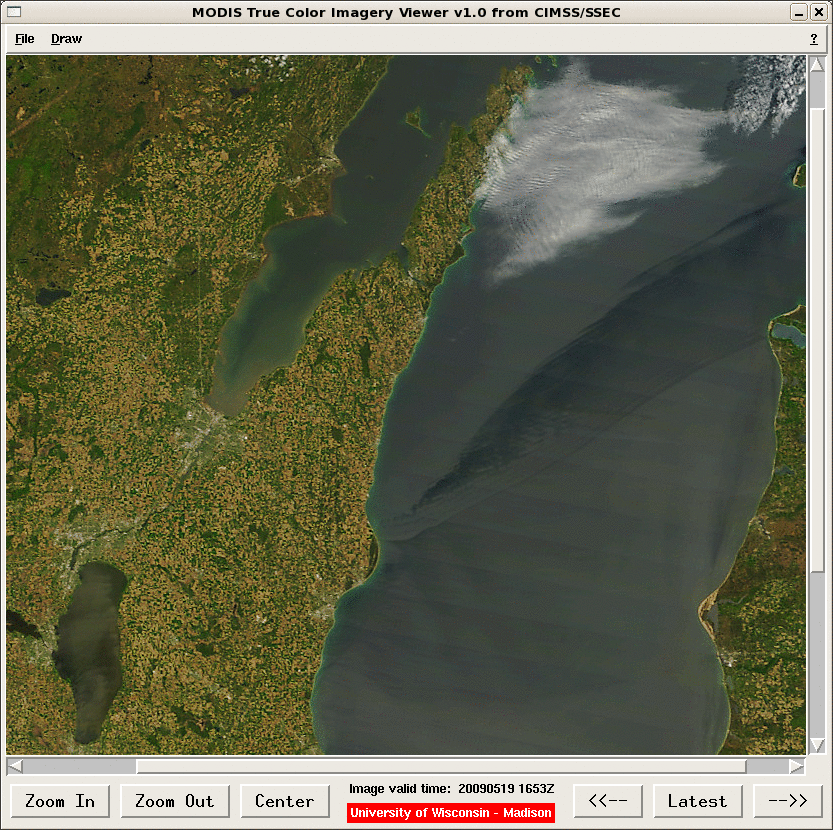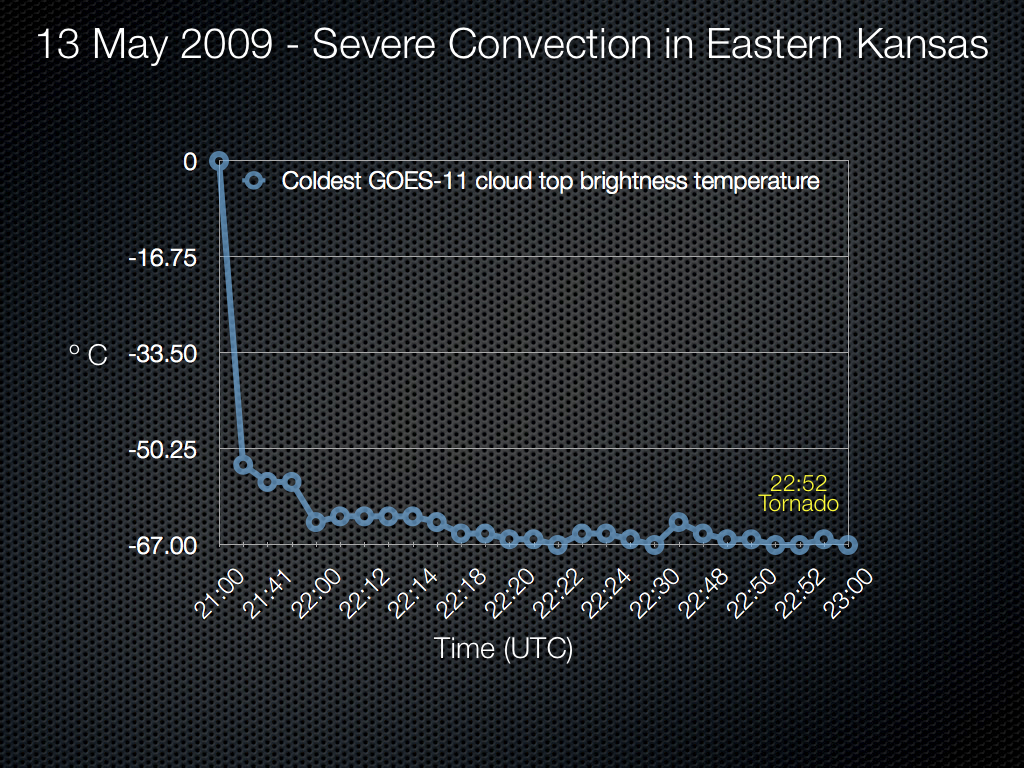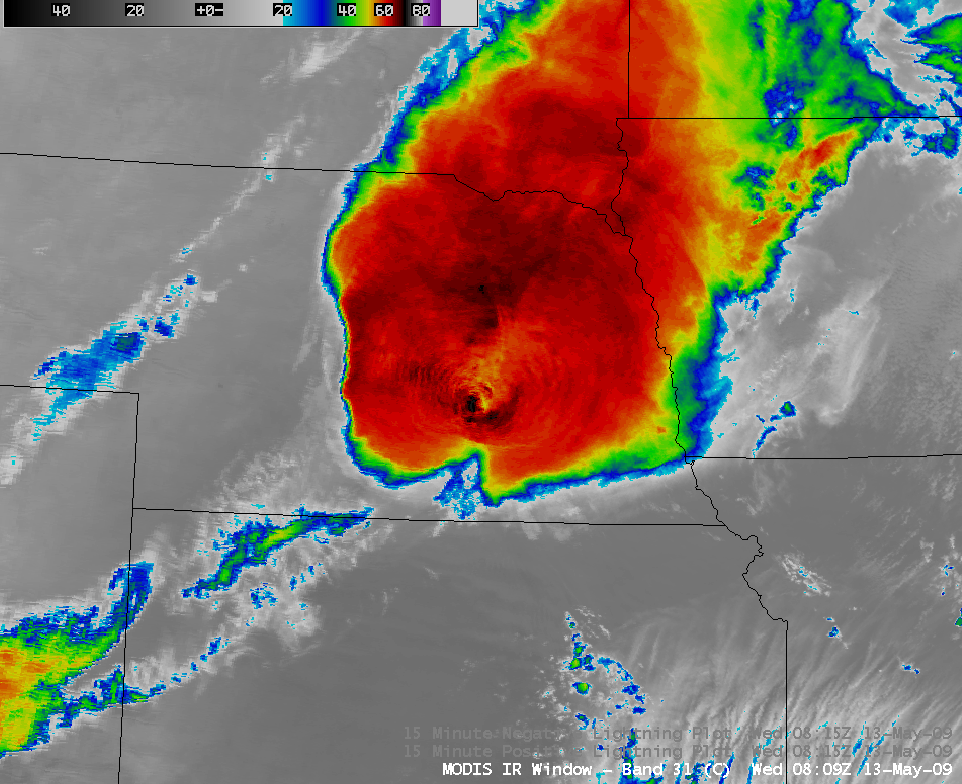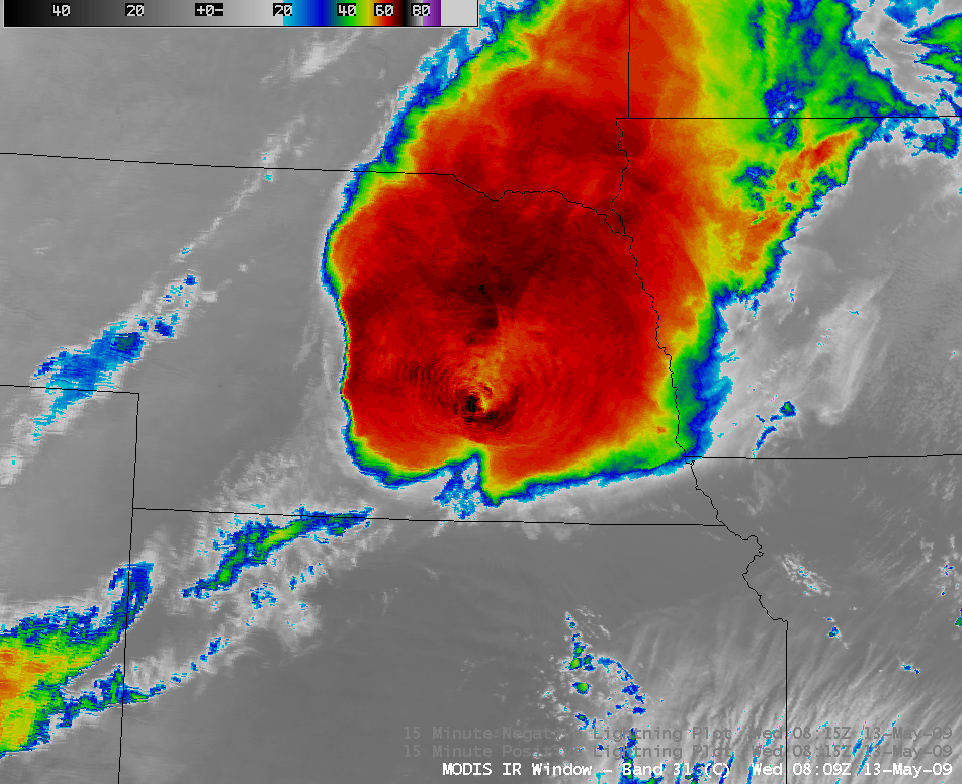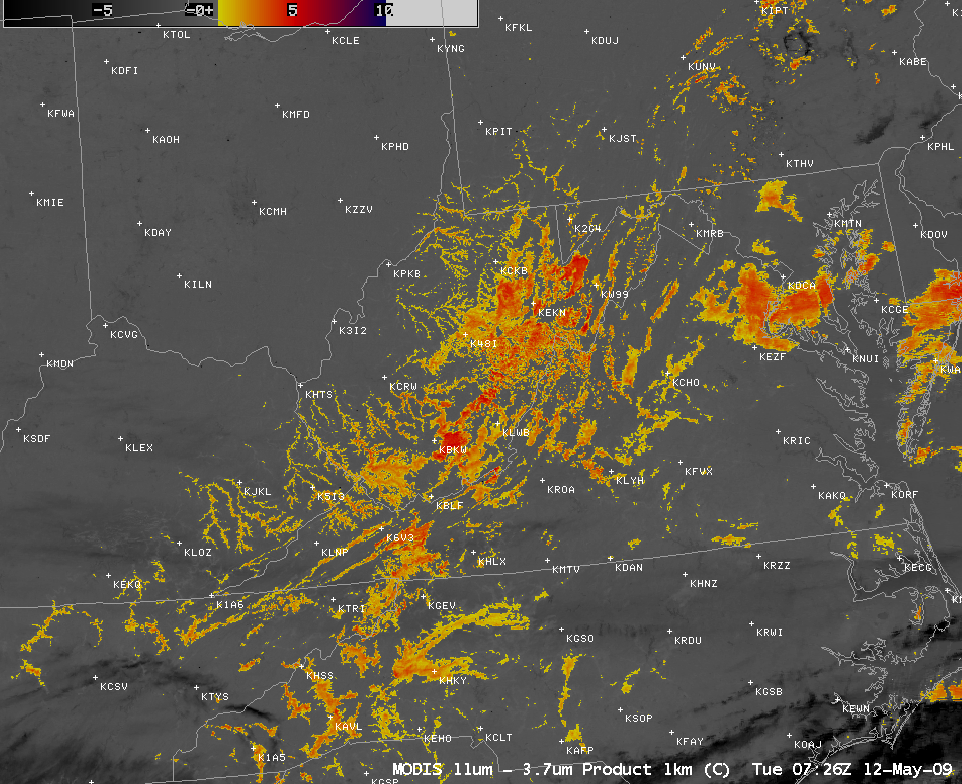A west-to-east oriented stationary front was draped across the Upper Midwest and Great Lakes states on 19 May 2009. AWIPS images of the GOES-12 10.7 µm IR window channel (above) showed that there was a general lack of cloudiness in the vicinity of the frontal boundary, which allowed the thermal contrast on either side of the front to be seen (with the warmer air and darker gray land surfaces located south of the front). However, the IR imagery also seemed to indicate that the far eastern portion of the front was beginning to sag southward, as seen by the of surge colder IR brightness temperatures (lighter gray shades) along the northeastern Wisconsin shoreline of Lake Michigan.
A closer view of the northern portion of Lake Michigan using GOES-12 visible channel images (below) showed that there was a patch of lake stratus propagating quickly southwestward along the western shoreline of the lake, presumably along and just behind the leading edge of the advancing frontal boundary. Air temperatures at buoy 45002 dropped to 39º F as northeasterly winds increased behind the front.
AWIPS images of the MODIS 250-meter resolution “true color” image and the corresponding 1-km resolution MODIS 11.0 µm IR window image (below) revealed both the leading edge of the colder air (the transition from warmer red and yellow colors to the colder green colors) inland across the northeastern counties of Wisconsin, as well as a wave/undular bore signature on the waters of Lake Michigan.
Consecutive image of the MODIS Land Surface Temperature (LST) product (below) also showed the southward progression of the colder air. In addition, note the appearance of the slightly warmer (lighter green color enhancement) southwest-to-northeast oriented tornado damage swath located farther inland — this damage swath was from the 07 June 2007 tornado event.
Consecutive 250-meter resolution MODIS true color images (below) indicated that the wave/undular bore signature over the waters of Lake Michigan continued to propagate southward during this time, marking the leading edge of the advancing lake-enhanced cold frontal segment.
View only this post Read Less


